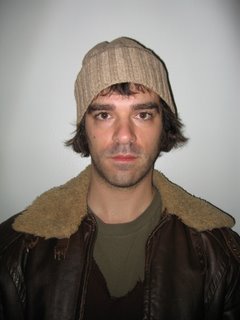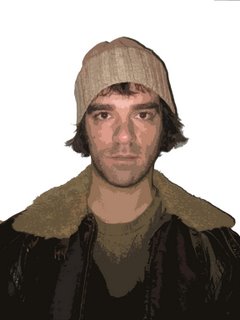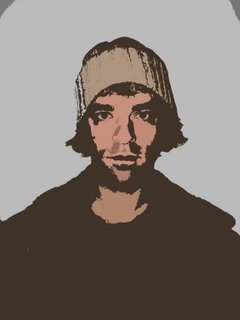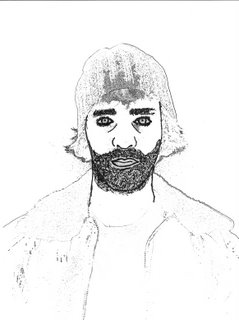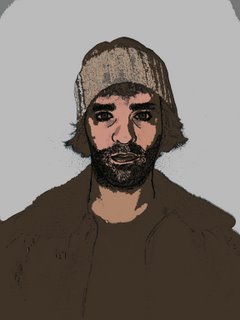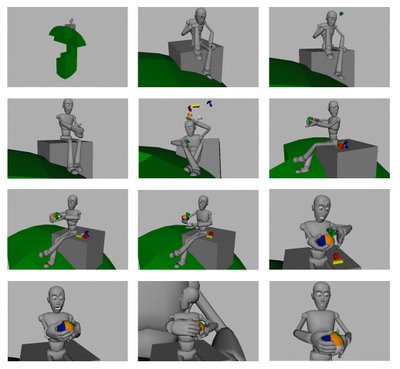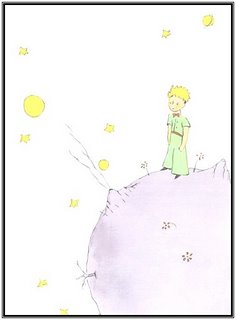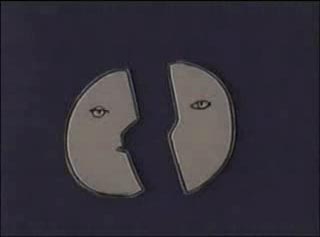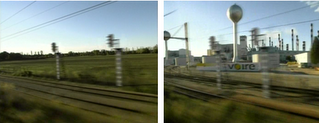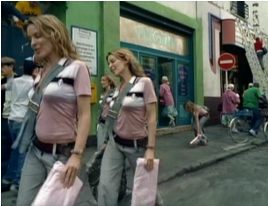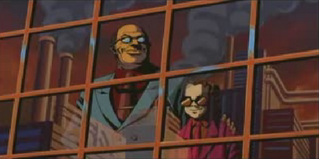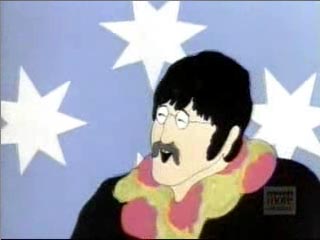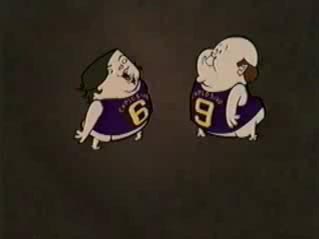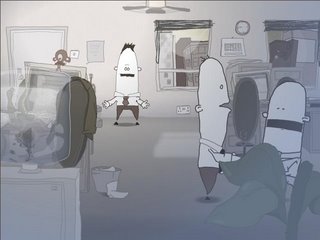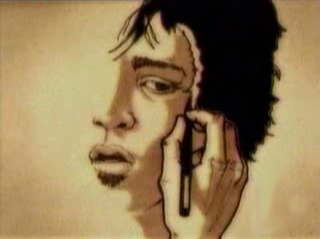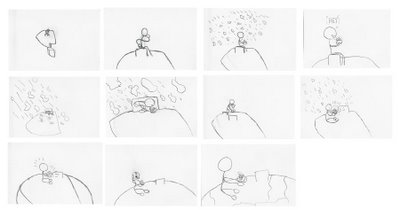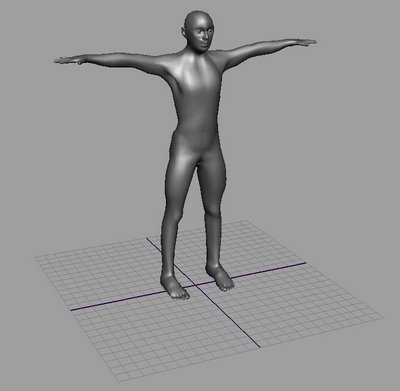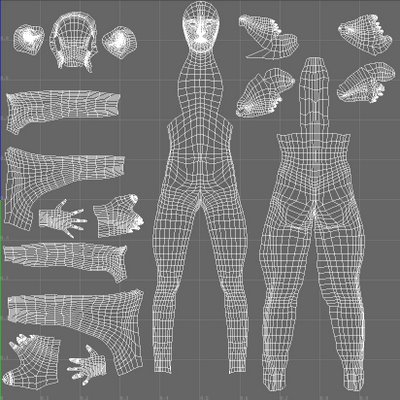To begin, here are some inspiring images of the little prince:
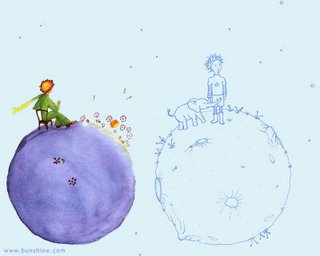
Now I turn to music videos for inspiration. Originally music videos were literally filming of the music. The video would be live concert footage pieced together from various camera angles. ACDC's
Back in Black is a pretty standard example:
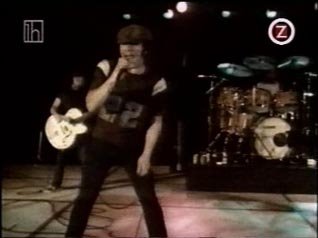
From very early music videos began to incorporate effects to enhance the visuals. The first music video to be shown on MTV was The Buggles'
Video Killed the Radio Star which, like many videos to follow, used manipulated overlapping footage and explosions as well as extensive costuming for a surreal, fantasy look:
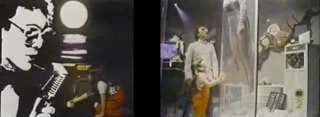
So, from the onset, music videos have incorporated effects work to enhance their look and to explore concepts visually that wouldn't be possible solely from capturing film.
From perusing a large number of videos it is readily apparent that they fall into a few very specific categories.
CONCERT/PERFORMANCE FOOTAGE:
As mentioned before, there are the concert footage videos like ACDC's
Back in Black or Queen's
We are the Champions. In some cases this concert footage is all that exists as the artist died and never created formal videos. As well, songs that were recorded before music videos were being created have since had concert or performance footage added to create a video. This is the case with Bob Marley songs and some Beatles classics (below, top). Currently, some bands choose to create a performance video where there is no audience, or a cast of extras standing in for the audience, and everything is planned out in a much more stylized way, with fancy camerawork, high quality film, and a very specific set and look to the performance. Green Day's recent
American Idiotis a good example (below left). Sometimes bands stick to the concert format, but get creative and incorporate the lyrics in a visual way. The Grateful Dead did this with
Touch of Grey by filming a concert and intercutting footage of skeletons playing the instruments. The lyrics discuss getting older, so the skeleton motif brings up mortality (below right).
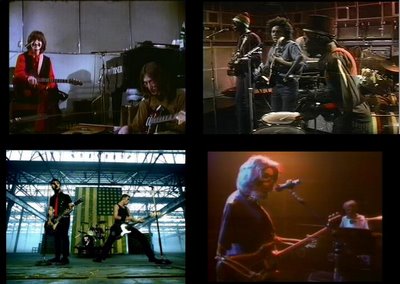
HOME VIDEO:
Like concert footage, home video footage is sometimes used to make the video feel like a personal display of one's life, cut together to reflect the message of the song. Eminem's
Mockingbird is all about providing for his daughter and the footage used is all home videos of his daughter (below left). Home video footage is also used to show how edgy a band can be. The Used's video
A Box Full of Sharp Objects integrates concert footage and home video footage of the band messing around to give a sort of wreckless tough persona to the band's hard rock song (below middle). The edginess of home video can also be interpreted in a comedic way, such as in Fatboy Slim's
Praise You where a performance by a (seemingly untrained) dance troupe to the song has become the video (below right).

NARRATIVE:
Narratives have been used extensively in music videos. Usually the narrative reflects the meaning of the song or enhances the potential meaning more abstract lyrics could contain. Usually the band/singer performing is incorporated as a parallel to the narrative and the video cuts between the two. As well, like short films and commercials, these narratives usually have a twist at the end that either turns the meaning of the video on its head or ties together a seeemingly meaningless video in a meaningful way. Guns and Roses' classic
November Rain is an example on a large scale. The band performs the song with a large orchestra in a concert hall and the narrative is of a wedding, the wedding party, which is rained out. The twist is that the rained out wedding party becomes an omen for the bride's death, whose funeral follows. Scenes from earlier of Axl Rose (lead singer and front man) alone in bed which had meant hesitation about the wedding are now revealed as the present and all the cut together images of the wedding and funeral are his bad dreams from the past (below left). Pink Floyd's hit
Another Brick in the Wall places children on production lines being force fed information at school. Referencing Fritz Lang's
Metropolis, the students walk robot-like in and out of the classroom/factory where they are machines for society's consumption. The video goes as far as to have them fall through a meat grinder, pumped out as strings of ground beef (below middle). Shaggy's
It wasn't me is a good current example where Ricardo "Rikrok" Ducent who collaborated on the video is caught by his girlfriend with another woman and goes to Shaggy for advice (below right).

MOVIE MUSIC VIDEO:
The movie music video is a specific kind of narrative music video where the video is being created in conjunction with a film. Usually the video is filmed in a location that relates to the film. As well, the film is referenced either by having footage from the film is intercut into the video as the narrative, or the actors participate in the video to make a more seamless whole. Some videos do a little of both. Such is the case with Coolio's
Gangsta's Paradise which was used in
Dangerous Minds. The video begins with Michelle Pfeiffer asking Coolio, "You want to tell me what this is all about?" Coolio proceeds to sing to her about the difficulties of his life. Later in the song scenes from Dangerous minds are cut in to the video footage as well (below top). Sometimes the film is only referenced by the setting, which is the case in
Lady Marmalade done as a collaboration by Pink, Christina Agulera, Mya, Lil Kim and has a cameo from Missy Elliot. The song was a cover of the original by Labelle and was used in
Moulin Rouge. As opposed to using film footage, the video is shot in the
Moulin Rouge style and focuses on the singing talents. However, explicit reference is made to the film by having a sign reading Moulin Rouge in the background of much of the video (below left). Once in a while an unusual example occurs, which is the case with Jessica Simpson's remake of Nancy Sinatra's
These Boots Are Made for Walkin' for the recent
Dukes of Hazzard, an updated version of the classic tv show. Jessica Simpson plays Daisy Duke in the film and is also a pop singer so the video simultaneously contains the singer and an actress in the film without even having to integrate any of the film footage, so it doesn't. The setting is a western bar, an appropriate setting relative to the film's theme, and there is even a cameo by classic country singer Willie Nelson. She does drive up to the bar at the beginning of the video is the
Dukes of Hazzard orange 1969 Dodge Charger, however, aside from that, the film is only referenced by the setting and the fact that Jessica Simpson is in both (below right).
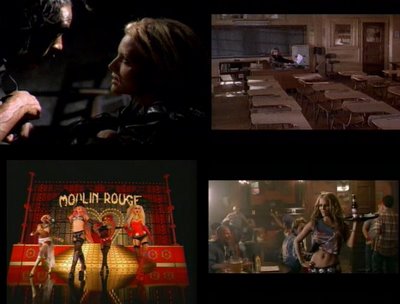
THEME:
Theme is a sort of subset of narrative where there is no real story that occurs, just a setting. Really, videos fall on a spectrum between narrative and performance, and the theme videos are somewhere in the middle. Even in narrative videos there is usually some performance--what it comes down to is how much of the video focuses on the singer singing or the band playing versus and intercut narrative. If not much room is left for a narrative it can't be very fully developed and becomes a theme. A good example of a video that integrates both performance and narrative is Bon Jovi's
It's My Life in which the band is performing in a tunnel and a girl who is at the concert calls her boyfriend and tells him to hurry up and get there. The rest of the video cuts between the band playing and the boyfriend racing to get to the concert. This video really does have a narrative, but because there is such a strong focus on the performance, and getting to the performance is the narrative, its far simpler than earlier examples of narrative. Nirvana's
Smells Like Teen Spirit is an even simpler example in which Nirvana performs in a high school gymnasium. They perform with cheerleaders holding pom-poms and students sit in bleachers. Intercut are shots of a janitor mopping the floor. There really is no story to the video, just the concept of teen angst as a result of being penned up in school.
BALLAD/SERENADE:
The ballad/serenade is another form of themed video where the artist merely moves through their environment singing their song. Unlike a band which is restricted in movement by their instruments, a singer is unbound and can move around while they sing. The Verve's
Bittersweet Symphony is a good example. The lead singer walks down the street and, in frustration bumps into people as he passes by. Its a form of a theme but the focus is on the individual moving through an environment and interacting with it, unlike the more basic themed videos where the band is situated in an environment and doesn't interact with the surroundings.
DANCE:
Many videos, especially since Michael Jackson's breakthrough choreography began, are formed around dance sequences. Jessica Simpson's
These Boots are Made for Walkin'-referenced earlier-contains a choreographed dance sequence. For many artists the focus is their ability to dance while they sing, so the narrative revolves around the dancing. With Jackson's creativity and financial backing his videos are the epitome of being able to tell stories while he dances. In
Smooth Criminal he weaves his way through a sleazy nightclub of criminals and gangsters, surviving on his dancing ability. In
Thriller a mini horror film occurs where ghouls climb out of their grave at the witching hour and turn MJ into one of them, at which point they all hunt his girlfriend. Most dance videos are far simpler, such as Usher's
Yeah! where the focus is mostly on his dancing in a nightclub-like setting.
EFFECT:
Some videos are created using a specific special effect and that becomes the focus. Sometimes this is because a famous director is hired and they have a specific concept in mind. Many videos that Michal Gondry creates are effect heavy, such as Kylie Minogue's
Come into My World in which she walks around a city block and every time she comes back to where she began a new version of her emerges from the same door she came out of originally. At the same time duplicates of everything she passes occur as well. There really is no story other than the creativeness of the idea and the optical illusion it poses. Nine Inch Nail's
Only is similar. It films a desk on which sits a pin-art that comes to life and shows Trent Reznor singing the song in the pin-art.
SPOOF:
The king of the spoof video is "Weird" Al Yankovic who takes his spoof songs of famous pop songs such as
Gangsta's Paradise by Coolio and
Bad by Michael Jackson--
Amish Paradise and
Fat and continues his spoof into the video by turning the original video into a comedy. He recreates the same shots, uses the same outfits and generally the same narrative--as in
Fat where he wears the Michael Jackson leather suit but blows up into an obese version of himself and engages in the same gang fight as the original. To a lesser extent some other artists use spoofs of popular culture such as Eminem mocking Tommy Lee and Pamela Anderson and referring to a blow-up doll as Christina Aguilera that is being fought over by Carson Daily and Fred Durst in his video
The Real Slim Shady. Another good example of a spoof video is Bowling for Soup's
1985 in which they perform in a garage and they dress in the attire of various bands that are mentioned in the song from Blondie to Bruce Springsteen to Motley Crue.
From all of this research I have created the following chart to help placement of my music video within the spectrum of videos that exist.
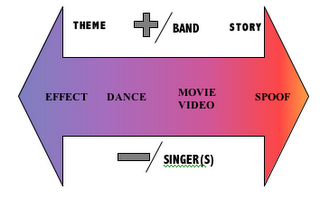
After creating these categories I have reconsidered them as a whole and decided that home video falls into the spoof category, theme and narrative are a larger spectrum that all videos exist within, and ballads and concert footage are merely differentiated by the performer...concert footage videos are band videos and usually include other elements from other categories and ballads are solo singers that usually incorporate other elements as well. What follows is an explanation of the spectrum above in a little more detail.
The spectrum basically exists from a theme based video, which is minimal in terms of narrative, to a full fledged story. For the most part effect videos are not focused on the story as they showcase the effect, dance videos inherently have more narrative than an effect, movie videos contain implicitly the story of the movie they are for (and usually reference some of the plot) and spoof videos reference popular media of some sort and create a commentary on it. As well, depending on whether the performer is a band or a solo singer or singers affects the ability to tell the story and changes the conventions of the video. Because a band usually presents themselves playing the instruments and are all gathered together in a standard stage setup there is less mobility than with a solo performer who can sing in any situation. This is not to say a story cannot be told in a band video, it is just done differently, so the vertical spectrum indicates whether there is a band or individual singers while the horizontal represents the level of narrative within each category of music video.
This will be really helpful for my research paper for which the first draft is due next week.




















